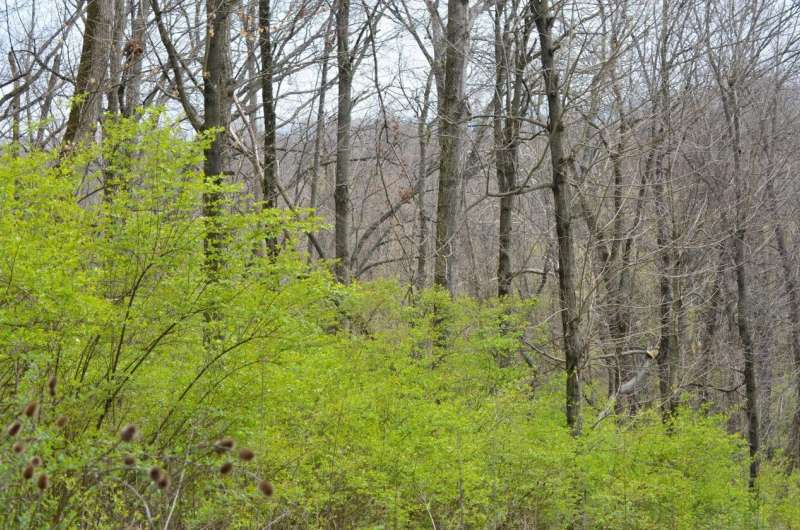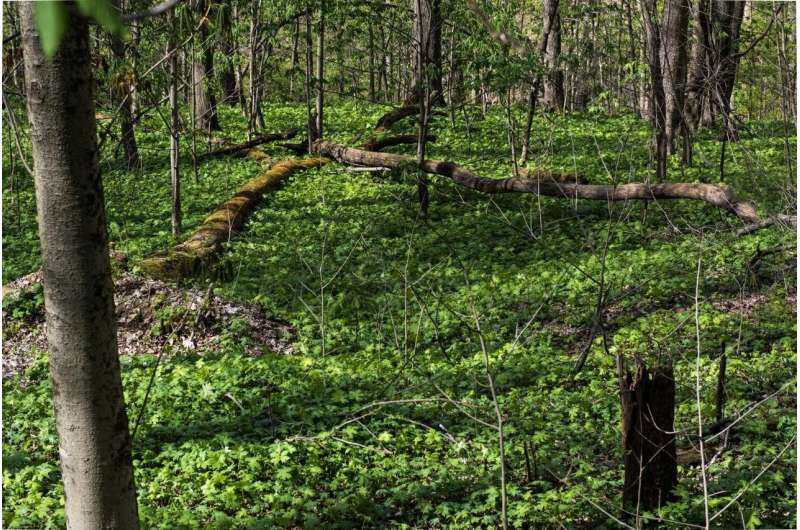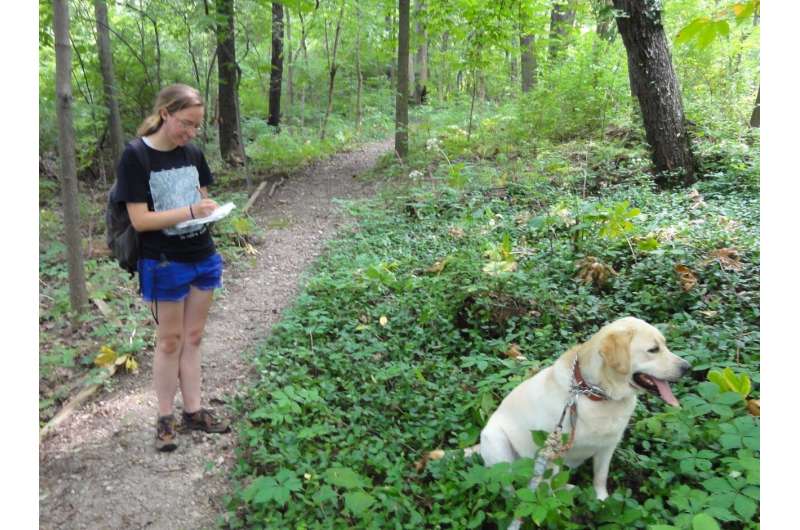Amur honeysuckle, like this patch seen in Ohio in November, stays greener longer into fall than most native trees and bushes. Credit: Denis Conover
One common invasive species is so widespread that you can see it from space.
The University of Cincinnati found that satellite imagery can identify nonnative and invasive Amur honeysuckle, an ornamental shrub introduced from Asia that has spread in forests across much of the United States.
UC graduate Bridget Taylor, UC biology professor Denis Conover and UC geography professor Richard Beck used satellite imagery to find nonnative invasive Amur honeysuckle in several urban parks and cemeteries from space.
Using one of the satellites in a series of Earth-observing missions jointly managed by NASA and the U.S. Geological Survey, the Landsat-8 satellite can measure the reflection of wavelength energy in the red and near-infrared bands. The ratio of the two wavelengths helps scientists identify foliage of different plants from orbit.
UC found that the method was effective in detecting Amur honeysuckle, according to a study published in the journal Ecological Restoration.
Amur honeysuckle bushes grow in thick patches, often crowding out and outcompeting other plants in a forest's understory. It has an extended growing season, leafing out earlier and staying green far later in the year than many native trees and shrubs.
Native wildflowers and ground cover at Bender Mountain Nature Preserve in Ohio are thriving after successful efforts to eradicate Amur honeysuckle. Credit: Gary Taylor
UC used Landsat-8 images to examine five urban forests in Greater Cincinnati. The goal: To develop an inexpensive and efficient remote mapping approach for ecological restoration in urban forests. They used global-positioning satellites to corroborate their mapping observations on the ground. They found that their maps were 82% accurate.
"The fact that it was possible to use the satellite imagery in an urban setting was pretty unique," said Taylor, the study's lead author.
"Urban areas have a lot of noise in satellite imagery. So it's harder to identify specific details," she said.
Taylor has participated in efforts to eradicate the nonnative Amur honeysuckle in places like Burnet Woods, the park adjacent to UC's Uptown campus.
"It's very bushy. Birds like to eat the berries and spread the seeds," she said. "It has a chance to green up and leaf out sooner than native plants, so native wildflowers often get killed off when they're growing under honeysuckle."
UC graduate Bridget Taylor conducts field research with UC professor Denis Conover and Conover's dog, Abigail. Credit: Richard Beck
The study shows that satellite images can provide an effective, inexpensive alternative to using drones or ground surveys to identify larger patches of the invasive bushes for ecological restoration, Taylor said.
Co-author Conover said satellite imagery could be useful in locating other nonnative invasive species such as English ivy and wintercreeper that stay green throughout the year and climb trees.
Co-author Conover said satellite imagery could be useful in locating other nonnative invasive species such as English ivy and wintercreeper that stay green throughout the year and climb trees.
More information: Bridget Taylor et al, Detecting Invasive Amur Honeysuckle in Urban Green Spaces of Cincinnati, Ohio Using Landsat-8 NDVI Difference Images, Ecological Restoration (2020). DOI: 10.3368/er.38.3.139
Provided by University of Cincinnati


























